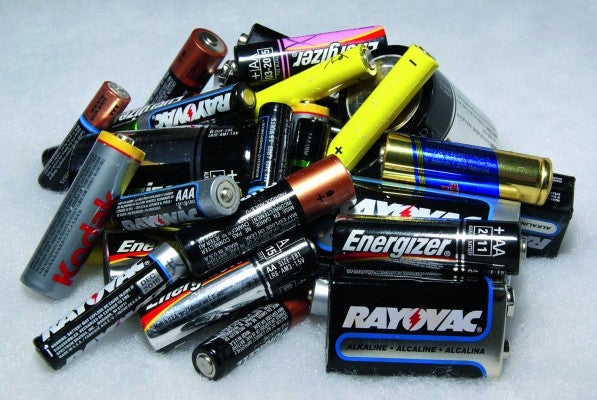Our Essential Guide To Batteries – Chemistry
Battery Chemistry: A Brief Guide

Batteries use a range of different chemical formulations to produce power. While it isn’t really necessary to fully understand the science behind the various chemical compositions and reactions involved, it is important to understand the practical differences that result from them. This is because putting the wrong type of battery into your camera or flashgun will not only lower its effectiveness, it could also leak and damage your equipment or become unstable and dangerous. Similarly, it’s also important to use the correct type of charger when recharging your batteries.
Carbon Zinc/Zinc Chloride
These are basically the no-name packs of ten you find in pound shops. They’re the cheapest battery type of the lot and for good reason – they drain super quick. Put these in a high-drain device such as a camera or flashgun and before long you’ll be taking them out and throwing them away.
Alkaline (LR6)
These are the most widely available batteries, with everything from premium brands like Duracell and Energizer to cheap, unbranded packs-of-ten in your local pound shop available. They are not rechargeable and have to be replaced when they run out, which means that while they might initially seem cheap the costs will mount up over time. While some premium brand alkaline batteries do boast a higher capacity than rechargeables, they also tend to drain faster. Ultimately, alkaline batteries are better suited to low-drain electrical devices (think digital clocks and suchlike) and are best if only used as a last resort in a camera or flashgun.
Lithium
Not to be confused with their Li-ion cousins, Lithium batteries are similarly capable of delivering a higher than average voltage but cannot be recharged. If you’re looking for a set of disposable AAs as back-up for your camera or flashgun though, Lithium batteries do make a better option than regular Alkaline LR6 ones. Another plus point with Lithium batteries is that they have a very long shelf life, which means they lose much less charge when not in use. Ultimately though, for cameras and flashguns you are still better off with rechargeable NiMH batteries.
Nickel-Metal Hydride (NiMH)
If you’re looking to go down the AA rechargeable route then NiMH batteries are your best option. They don’t tend to last quite as long as disposable lithium batteries, but they can be recharged many times, meaning you will soon recoup your costs.
Nickel-Cadmium (NiCad)
NiCad batteries are pretty much obsolete these days owing to the fact that part of their inner composition (the Cadmium part) is a highly toxic heavy metal and thus highly dangerous to humans as well as highly damaging to the environment.





